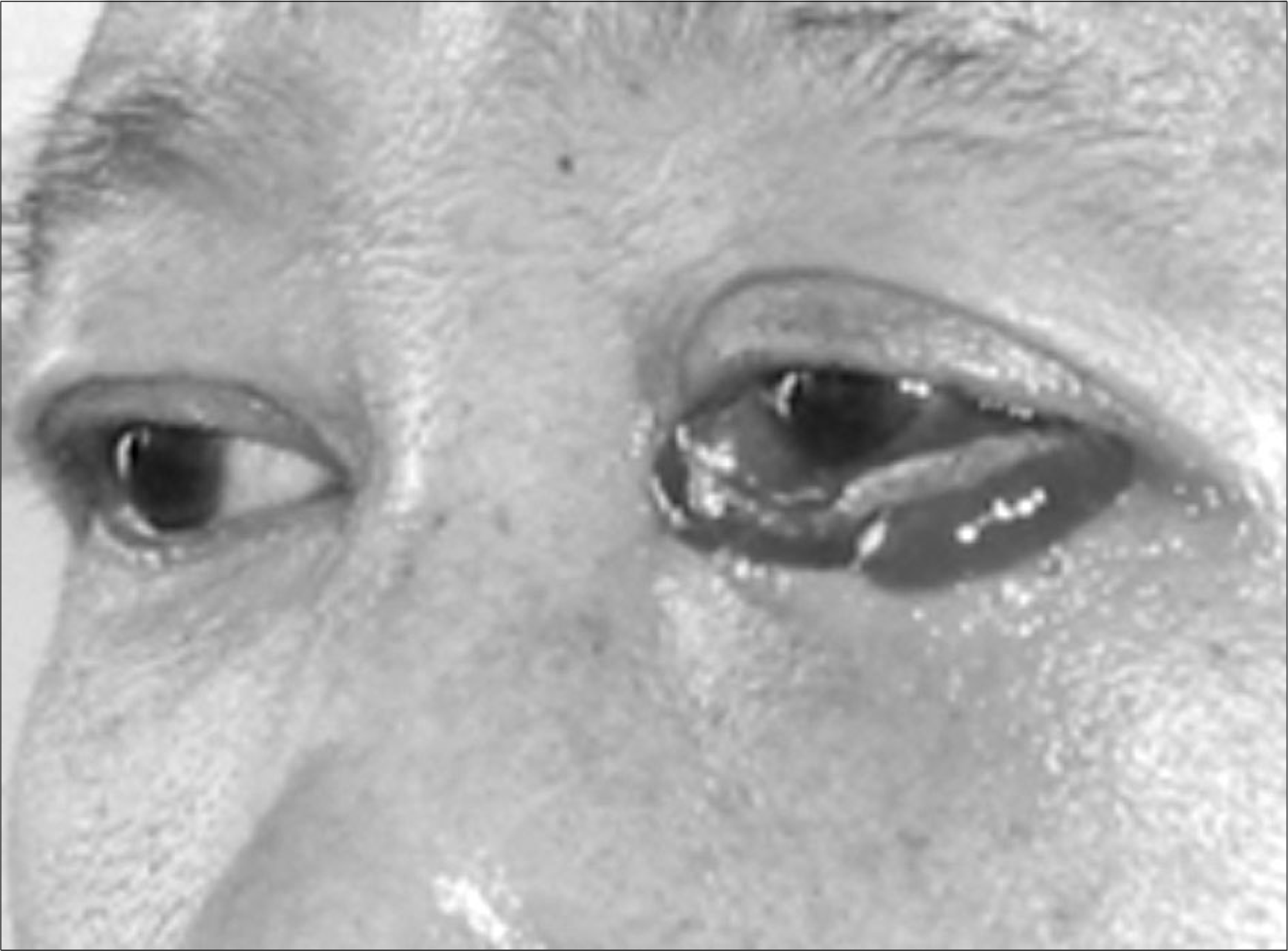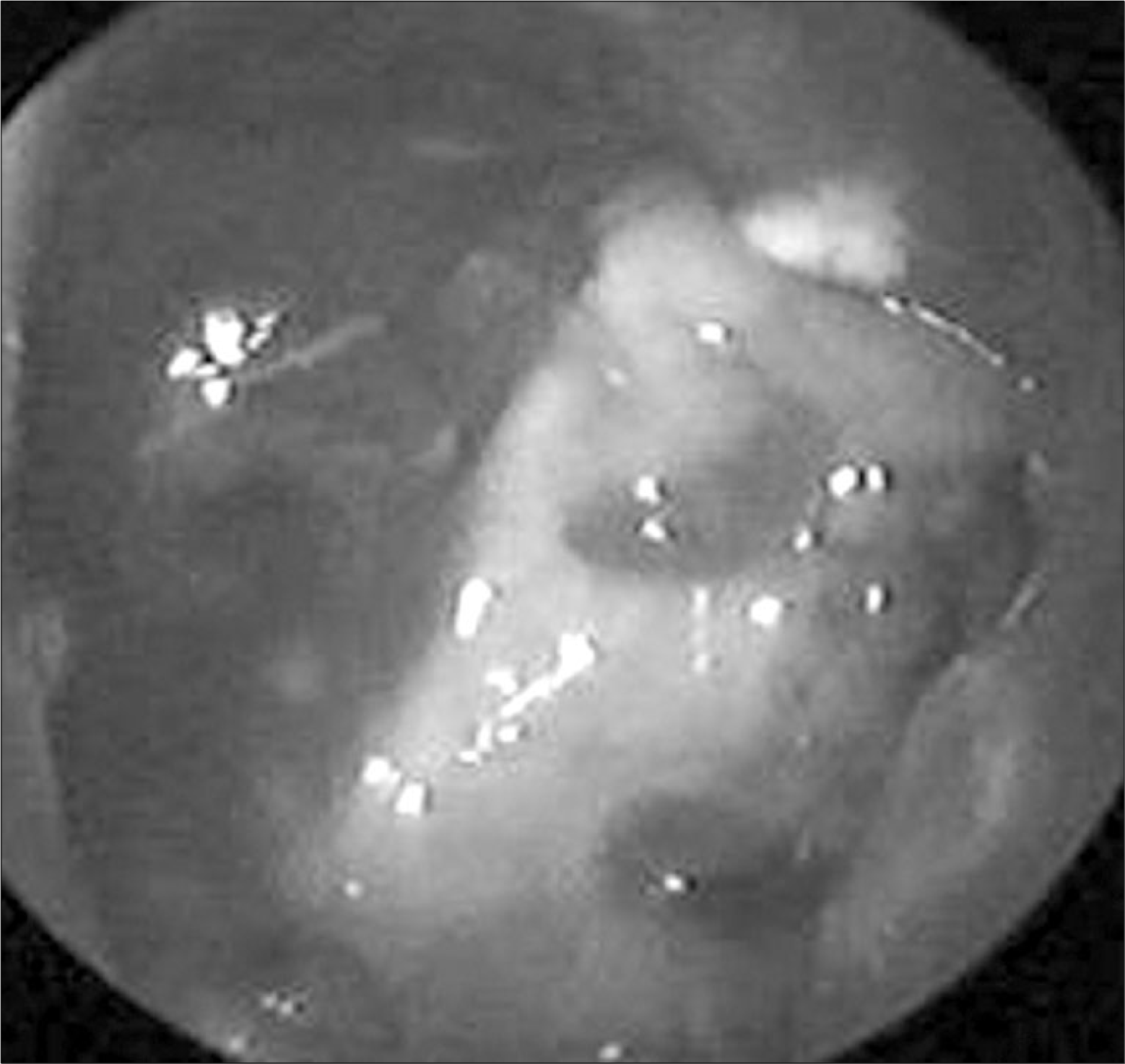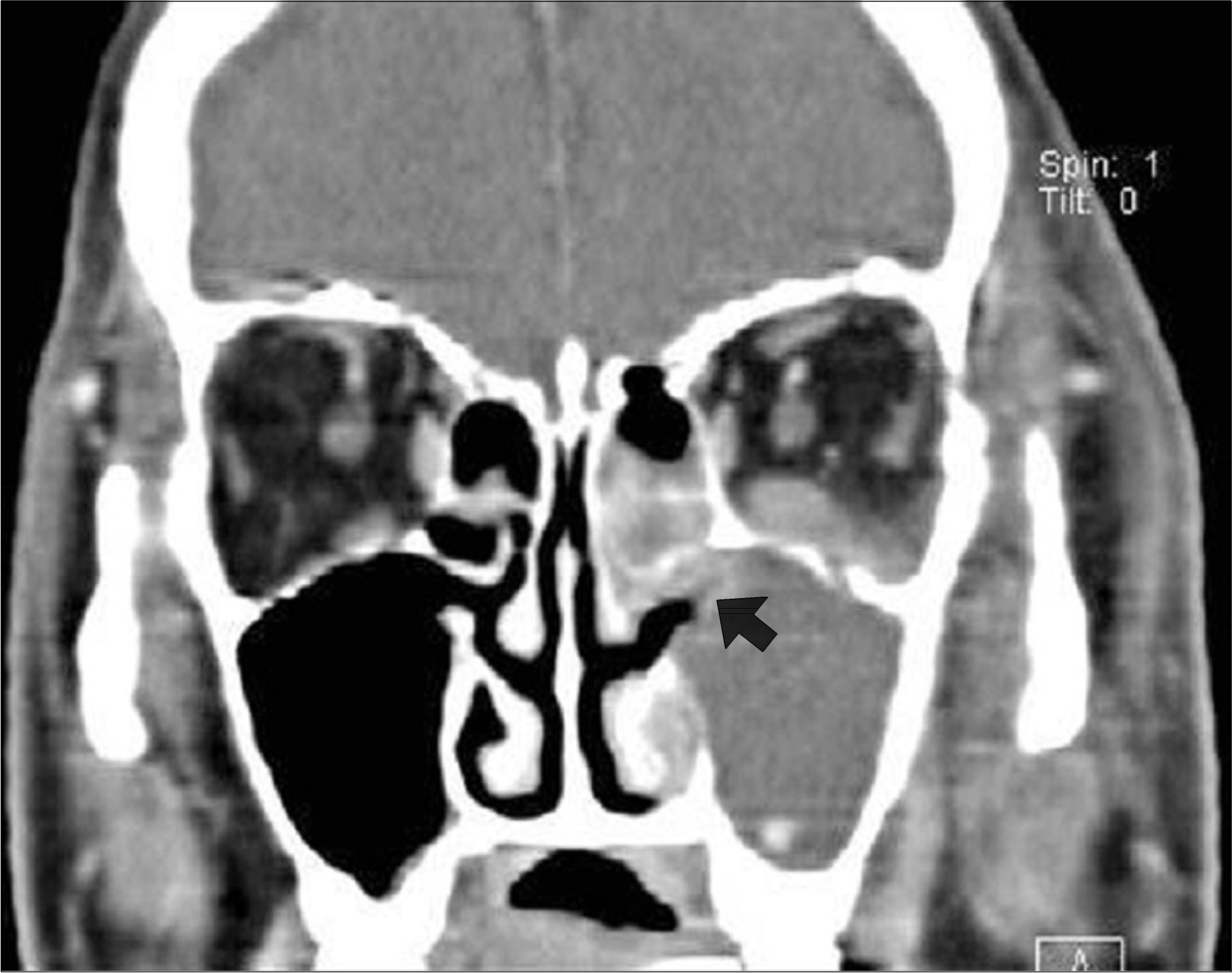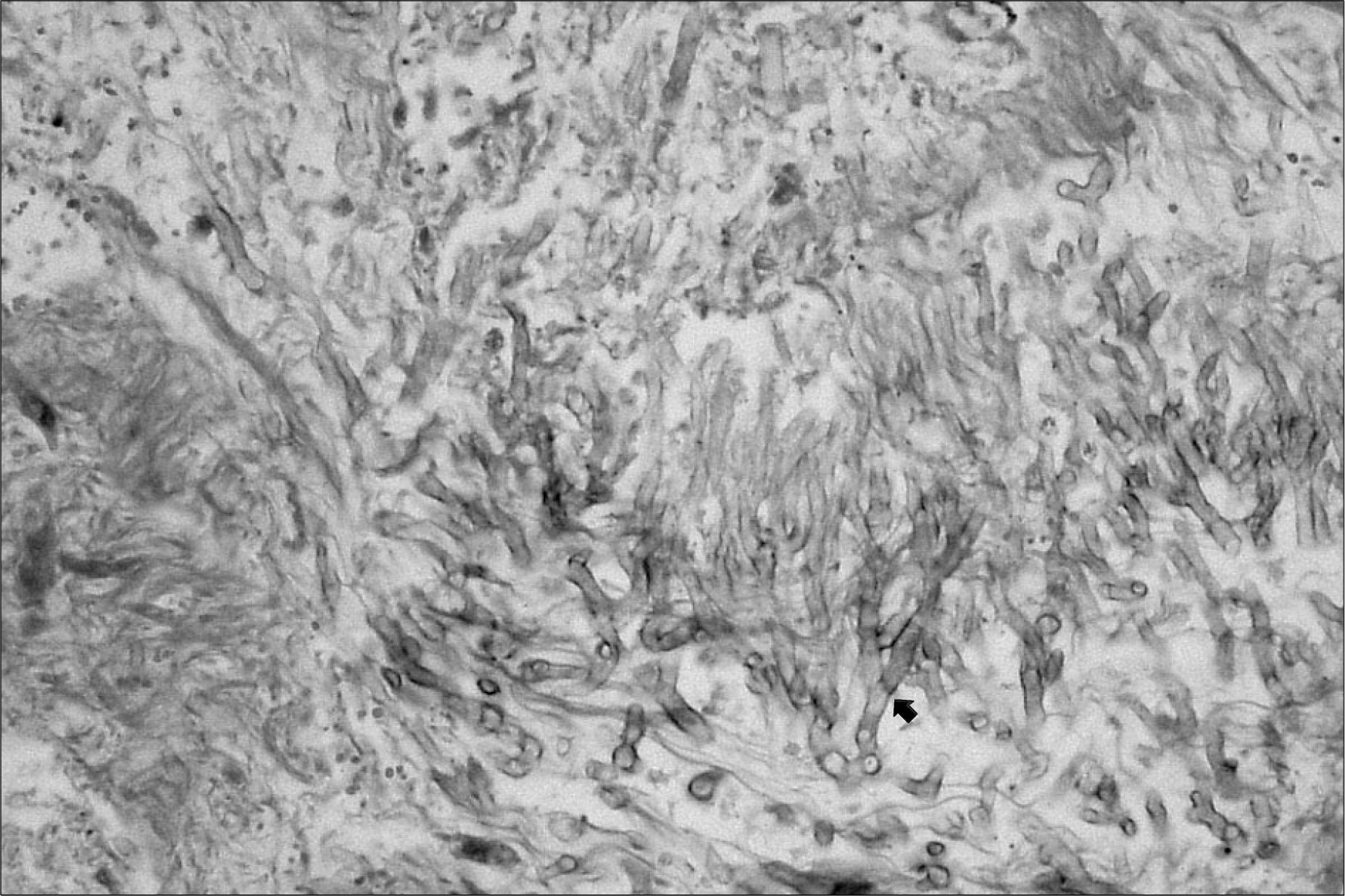Abstract
Invasive aspergillosis (IA) of the paranasal sinuses is a rare infectious complication associated with allogeneic hematopoietic stem cell transplantation (HSCT). However, immunocompromised patients are particularly at risk of fulminant IA. The high risk of an invasive fungal infection (IFI) following allogeneic HSCT is due to several factors, including neutropenia before engraftment, disruption of mucosa! barriers by various preparative regimens and the use of broad-spectrum antimicrobial agents, as well as the immunosuppressive effects of prophylaxis and treatment of GVHD. As the therapy for an IFI following allogeneic HSCT is often unsuccessful, the mortality rate is increased by 95%. Therefore, early diagnosis is important to overcome the high mortality of this destructive disease. In previous studies, high risks for the early onset of IA were demonstrated in patients with severe aplastic anemia (SAA), independent of the day of engraftment. Here, we report a case of invasive aspergillosis of the maxillary sinuses and orbit in a 50 years old man with SAA, who underwent an allogeneic HSCT from a HLA-matched sibling conditioned with Cytoxan/Fludara/ATG.
REFERENCES
1). Martinez D, Burgueno M, Martin M, Sierra I. Invasive maxillary aspergillosis after dental extraction. Oral Surg Oral Med Oral Pathol. 1992; 74:466–8.

2). Notani K, Satoh C, Hashimoto I, et al. Intracranial aspergillus infection from the paranasal sinus. Oral Surg Oral Med Oral Pathol. 2000; 89:9–ll.

3). Meyer RD. A. pergillus species. Gordobach SL, Bartlett JG, Blacklow NR, editors. Infectious diseases. 2nd ed.Philadelphia, PA: Saunders;2006. p. 2327–34.
4). Latge JP. Aspergillus fumigatus and aspergillosis. Clin Microbial Rev. 1999; 12:310–50.
6). Talbot GH, Huang A, Provencher M. Invasive aspergillus rhinosinusitis in patients with acute leukemia. Rev Infect Dis. 1991; 13:219–32.

7). Napoli JA, Donegan JO. Aspergillosis and necrosis of the maxilla: a case report. J Oral Maxillofac Surg. 1991; 49:532–4.

8). Myoken Y, Sugata T, Kyo T, Fujihara M. Pathologic features of invasive oral aspergillosis in patients with hematologic malignancies. J Oral Maxillofac Surg. 1996; 54:263–70.

9). Walsh TJ, Pizzo PA. Nosocomial fungal infections: a classification for hospital-acquired fungal infections and mycoses arising from endogenous flora or reactivation. An nu Rev Microbiol. 1988; 42:517–45.

10). Waxman JE, Specter JG, Sale SR, Katzenstein AL. Allergic aspergillus sinusitis. Concepts in diagnosis and treatment of a new clinical entity. Laryngoscope. 1987; 97:261–6.
11). Talbot GH, Huang A, Plovench M. Invasive aspergillus rhinosinusitis in patients with acute leukemia. Rev Infect Dis. 1991; 13:219–32.

12). Henderson VJ, Hirvela ER. Emerging and reemerging microbial threats. Nosocomial fungus infections. Arch Surg. 1996; 131:330–7.
13). Marr AM, Patterson T, Denning D. Aspergillosis, pathogenesis, clinical manifestations, and therapy. Infect Dis Clin North Am. 2002; 16:875–94.
Fig. 1.
The gross appearance of the patient showed a slight left exophthalmos, protrusion of lower conjunctival mucosa, left periorbital and cheek swelling.

Fig. 2.
Endoscopic findings of left maxillary sinus showed brownish white discoloration and edematous necrotic mucosa which were suggestive findings of fungal infection.





 PDF
PDF ePub
ePub Citation
Citation Print
Print




 XML Download
XML Download